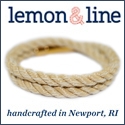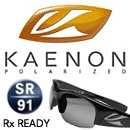
|
|
Discovering the Hobie 16 (August 7, 2009) Geoff Beckerís DNA was strictly monohull. Becker had come from dinghy roots, was an intercollegiate sailing All-American at UC-Irvine, and a two-time CR 914 national champion, and won the 80-boat Lightning North Americans in 2007. So when Scuttlebutt saw he was recently pushing the leaders at the Hobie 16 North Americans, we had to check in to find out more about this multihull convert: In 2003 I coached the US SAILING Team at the Pan American Games in the Dominican Republic. At that event I got my first exposure to Hobie 16 racing by the US sailors Paul and May Ann Hess, in fact Paul took me for a sail at the end of one of the days to show me the boat. When I coached the 2007 Pan American Games in Rio de Janeiro, I coached Bob Merrick and Eliza Jones Cleveland in the Hobe 16 and again really enjoyed watching the boats race. After that event, I caught the bug and bought a cheap beater Hobie 16 to see if I would like it myself. I really enjoyed the boat and later in 2008 I bought a better boat and began to race it competitively for the next year. The NAs seemed like a good regatta to test how well I had learned the boat in the year or so I had been working at sailing it and we made it our goal event. In the last few months we sailed several regattas and didnít do particularly well in any one of them. That said, we did have moments of speed that was as good as the top group. We tried to learn from what worked for us and kept close track of what we did in those instances. In addition, we asked a lot of questions of the top sailors in the class. Many Hobie sailors have been sailing the boats for much of their lives and know a lot of the tricks of the trade that you canít find in any tuning guide. I can say that the Hobie crowd is very open and willing to assist newbies to the class and genuinely want to help those who are trying to get better. Basically, by the NAs, we got to a point where we were up to speed with many of the top boats and all that was left was to sail the regatta. Since I have sailed in many large fleet events, that part didnít need as much focus for us and with our new speed we were able to sail in the front group most of the time. It is always easier to blame your crew, but in this case she had nothing to do with it and was a victim of the circumstance. We were leading race 11 and sailing upwind toward the last windward mark (A mark) before a downwind finish, when I came in off the wire in a lull and sat on the side of the trampoline waiting for the next puff. When the next puff came, I pushed out and quickly noticed my trapeze handle had fallen off its hook. As I went over the side, the last thing I saw was my crew flying toward the rigging and the boat capsizing under me. By the time we recovered the boat, all we could manage was 20th place in the race. Since the Hobie 16 is a strict one-design class, so much of the boat is easily checked visually. If it isnít a Hobie part, is shouldnít be on the boat. At the NAs, they basically weighed the boat and the crew. The boat has a minimum weight and the crew weight minimum is 285 pounds. Hobies are amazingly easy to race! In smaller events you just show up with a boat, or in some cases boats can be made available for new sailors to use. In the bigger events you need to be a member of the Hobie Class Association of North America (HCA-NA) in order to participate. Class membership isnít very expensive and the regatta entry fees are far less than many other classes. The Hobie 16 is really an inclusive group and the class wants more sailors to be involved whenever possible. The biggest difference in racing Hobies is the tactics. You plan out your upwind tactics based mainly on the number and placement of your tacks. You lose a significant amount of distance when you tack, so minimizing the number of tacks is a major tactical consideration. Knowing that, the layline tacks are relatively important. In most cases the boats coming in on the laylines overstand the mark. On the starboard layline, this is because the penalty for tacking again at the mark is much worse than the extra distance sailed by overstanding. The fleet seemed to also overstand a lot on port layline and I really never found a reason why this was the case, but it was very common. We tended to approach the mark on port tack, just below layline, and save the extra distance while at the same time approaching the mark in front and to leeward of the boats overstood on port layline. The Hobie 16 is a fun and easy way to go sailing fast. The racing is competitive and everyone has the same equipment, so if you are new to catamarans it makes it easier to learn the differences in sailing style from a monohull. The crowd at a Hobie event is certainly different than that in many other classes. It is mostly comprised of families and friends who have been sailing these boats for generations in some cases. Having said all that, the sailors in the class are just as competitive and the racing is exciting and challenging. I would recommend sailing these boats to anyone as a chance to have as much fun sailing as you do on the beach afterward. It is hard to have a bad day on a Hobie! Speed in a Hobie 16 is a combination of factors. Being somewhere near min crew weight seems like a key to racing at the top level. Setting the boat up, although not technical, is a major factor to good upwind speed. The boat setup is based a lot on feel and sailing style and is something that seemed to take a lot of trial and error for me. The rig tension and rake are all about the balance between the aft angle of the mast and the amount of leech tension you can achieve when the mainsheet is two blocked. If the mast rake is too far aft, the mainsheet two blocks before getting enough leech tension in the main and if the rake is too far forward, the main leech is tight before two blocked and the boat wonít point as high upwind. There seems to be many ways to sail the boats fast, in fact, to quote one Hobie 16 tuning guideÖĒset the jib halyard tension to a point where it seems fast and mark it there.Ē Many events around this area, and the Mid-Atlantic, are held at smaller sailing clubs located on beaches or around parks. Since Hobies are easy to launch almost anywhere, it is common to attend events that are in state parks or beaches and the boats can be launcher near the parking lots. Along with that, many of the events allow, or provide for some sort of camping for the competitors. if the camping isn't available on site, a nearby location is usually provided in the NOR. Because of this, most of the sailors stay onsite, or very nearby, allowing for some very social gatherings after the racing. Sailing in Hobie regattas is easy, fun, and all are welcome. back to top |







|


